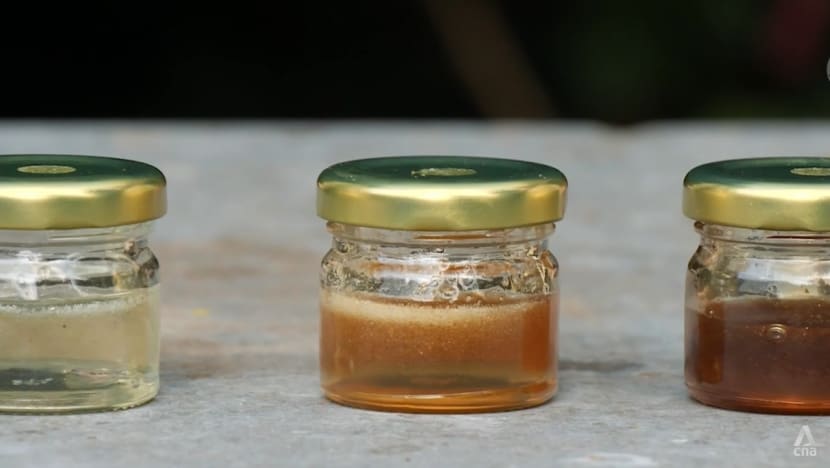UK researchers find new methods to solve sticky issue of ‘honey laundering’
Chinese exporters are suspected of flooding the market with cheap and blended honey products which could harm people’s health.


This audio is generated by an AI tool.
BEDFORDSHIRE, United Kingdom: Honey is a pantry staple in many homes around the world, with a global market size of US$9 billion and growing.
But what consumers may not know is that the honey they have in their kitchens could be mixed with cheap sugar syrups and other additives. This helps lower the costs of producing each jar.
Concerns remain over imported honey – particularly from China, the world's largest producer – being tainted in this manner.
Researchers trying to uncover adulterated honey have also struggled with doing so. But now, the sticky problem of “honey laundering”, as it is sometimes referred to, may have some new solutions.
POTENTIAL HEALTH PROBLEMS
China produces about a quarter of the world’s honey, followed by Turkey, Iran and India.
However, Chinese exporters are also suspected of flooding the market with cheap and blended products which could harm people’s health.
Research – conducted largely on animals like rats, chickens, and fish – found that they suffered higher levels of blood sugar as well as more liver and kidney damage than those fed unadulterated honey over a long period.
Pure honey also retains more of the natural antibacterial properties, along with a greater proportion of nutrients like proteins, antioxidants and minerals.
“When you go into a supermarket and you look along a shelf of honey, the colour is pretty uniform. The honey packers mix their honeys to create this uniform-looking thing that tastes similar,” said Helen Rogers from Highgate Honey, a small family-run honey business in London.
She noted that honey packers in the United Kingdom are “very often” not beekeepers. They choose to import honey before putting their brand label on it.
“(This means) a lot of the supermarkets won’t know what’s in those jars,” Rogers added.
Her company keeps bee hives all around North London. She told CNA that the different colours of honey from these hives represent different types of flowers that the honeybees were foraging on.
However, it remains tough to figure out whether honey is real or not.

POSSIBLE SWEET SPOT IN RESEARCH
On the bright side, researchers from Cranfield University in the UK may have just found the sweet spot.
This year, they made a scientific breakthrough and vastly improved the way honey can be tested.
The first method reduces runny honey into a mass of plant DNA, allowing scientists to look for signs of plant sugars that should not be there.
“Corn syrup, especially high-fructose corn syrup and things like that, is very cheap and we think it could be used to adulterate honey. It looks very similar (to honey),” said research student Sophie Dodd from the university’s Centre for Soil Agrifood and Biosciences.
“And then rice syrup may be used in potentially Asian countries where rice is grown more commonly. So these are the top two syrups.”
A variant of that test goes even further by revealing the honey’s full profile of plant DNA, and in what proportions.
This reveals if genuine and premium honey – perhaps from a renowned region – has been mixed with another cheaper kind of honey.
Meanwhile, the final test relies on the fact that all honeys will be slightly different depending on what nectar the bees ate, in what season, and in which locale.
A laser analyses the honey and produces a unique chemical fingerprint.
By doing these tests, the team can create a database of what pure and adulterated honeys look like.
“And then by introducing machine learning algorithms, we can create predictive models that can give us an answer regarding the purity of the sample and also they can identify the specific type of syrup used for adulterating the honey,” said bioinformatics lecturer Maria Anastsiadi, who is part of the team.
The new research methods come as countries across Europe have been demanding stronger checks to make sure imported honeys are authentic.
With techniques like those developed here at Cranfield, detecting "honey laundering" could become a lot easier.














